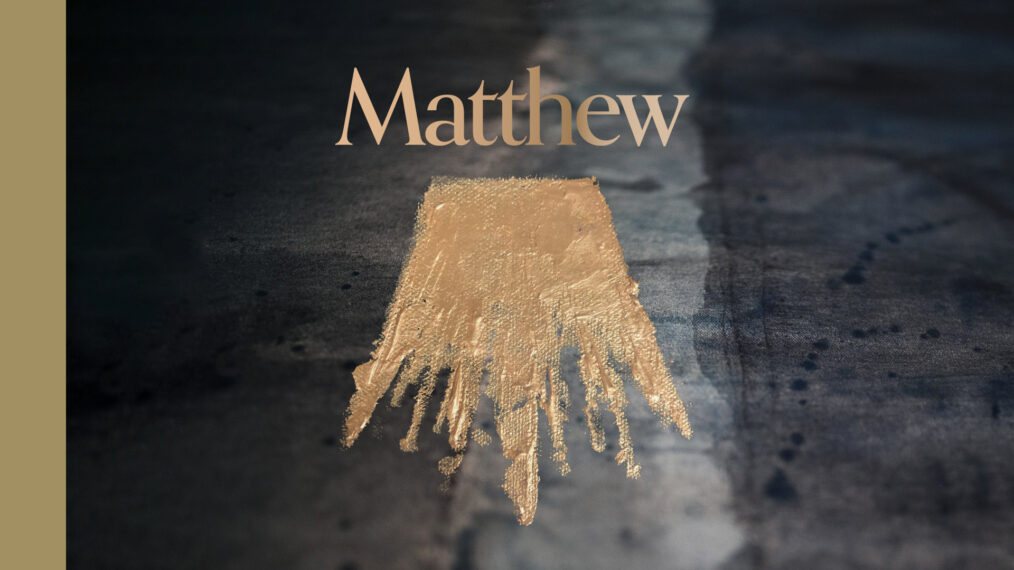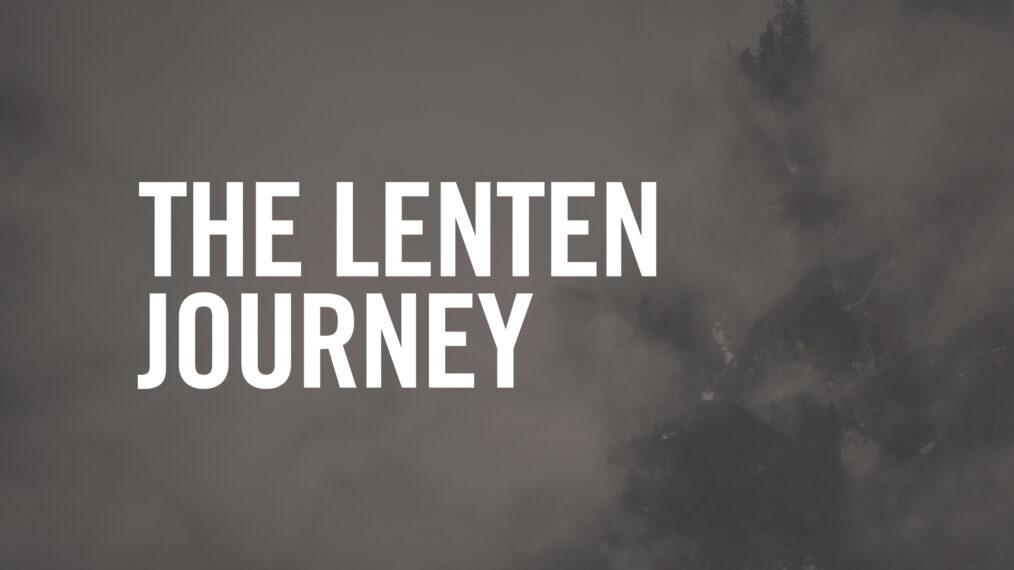Set apart 10-30 minutes at some point on Saturday to work through this meditation slowly as an individual or household. Have a timer handy for moments of silence.
Read
John 19:38-42
After these things Joseph of Arimathea, who was a disciple of Jesus, but secretly for fear of the Jews, asked Pilate that he might take away the body of Jesus, and Pilate gave him permission. So he came and took away his body. Nicodemus also, who earlier had come to Jesus by night, came bringing a mixture of myrrh and aloes, about seventy-five pounds in weight. So they took the body of Jesus and bound it in linen cloths with the spices, as is the burial custom of the Jews. Now in the place where he was crucified there was a garden, and in the garden a new tomb in which no one had yet been laid. So because of the Jewish day of Preparation, since the tomb was close at hand, they laid Jesus there.
Reflect
Holy Saturday. A day we often miss entirely. In our flurry and hurry of preparation to ready ourselves for the celebration of Easter morning, we forget that there was an entire 24-hour day in between the horrors of Good Friday and the joys of Easter. More than a full day between death and life. Between the last exhale and the next inhale. A full day between the darkness of despair and the dawn of new hope.
We already know the full story, so it’s easy enough for us to skip straight to the “happy ending.” That feels more comfortable and much less awkward to us, especially in this day and age. And, if we’re honest, this is what we’re tempted to do with all of our problems, griefs and “little deaths” we experience during our time on earth. We tell ourselves, “everything will be fine in the end!” We push down our discomfort and sadness, jumping straight to an optimistic perspective. We find silver linings. We sugar-coat. We strive to turn our situation around as quickly as possible, and if that doesn’t succeed, we often try to escape, or medicate, or numb ourselves from feeling the pain. These are considered normal reactions in our broken world.
But is it how God intended us to live?
Why would God allow for an entire day between Good Friday and Easter? Is it “productive?” What good does it do us? What good did it do the disciples? Couldn’t Jesus have risen on Holy Saturday? Or, for that matter, immediately after being crucified? Why did He make the disciples wait till the third day?
It seems that, through some great mystery, God chose to use the waiting and silence of Holy Saturday for some deeper meaning and purpose. God’s thoughts are not our thoughts, His ways are not our ways, and His timing is not our timing. It wasn’t Abraham’s timing, waiting for a promised child. It wasn’t Job’s timing, waiting for his family to be restored. And it wasn’t the disciples’ timing, waiting for the coming Kingdom and the resurrection.
So how do we approach these “confusing in-betweens” with appropriate health and faith? Have you ever considered how Jesus, the only perfect human to ever live, wept over the death of His friend Lazarus? He took real time to feel sadness and grief even though He knew He would resurrect Lazarus from the dead within a few hours! Jesus models time and time again that we are made as humans to slow down, to allow ourselves to feel emotions before God, and to wait for God to move in His timing.
On Holy Saturday we remember this most painfully confusing “in-between” that the disciples faced millenia ago. But we also recognize that each of us are facing our own “in-betweens” right now, as we wait for God to answer our prayers and ultimately redeem all things. We might be waiting for God to heal a disease or an emotional grief. We might be waiting for reconciliation with a friend or family member. We might be struggling with the recent loss of a life, a home, or a career. We may deeply desire a new relationship or a new chapter in life. We may be waiting for God to pull us out of a “dark night of the soul.” When we slow down, we may even simply feel the weight of the world’s brokenness and our longing for Christ to make all things new.
Yet, through each of these Holy Saturdays we live through, we are not alone. We find ourselves in the company of all who walked with Jesus before us, and even more preciously, we find ourselves in the very presence of our kind Savior who gave up His life for you and me. He who once lay still and breathless in the belly of a cold tomb now sits with us here in this moment.
SILENCE & STILLNESS
Right now, take a few moments to think about one or two “in-betweens” you’re experiencing, whether great or small. As they come to mind, allow yourself to feel sadness over your unmet longings. Silently ask God to fulfill these longings, even if you’ve asked countless times before.
Then, if possible, set a timer for 2-5 minutes to sit in silence and stillness before God. Remember that He is with you. Recognize that He also weeps with you over the “in-betweens.” Allow His presence with you now to bring comfort.
READ
“Holy Saturday” Written by Brent Summers, 2021
A threshold, and an open door,
A pause in sacred time,
Remembering what came before,
To know a plan sublime;
Suspended now ‘tween darkest day
And brightest dawn e’er known,
Our thoughts, unsettled as we pray,
Come to the heav’nly throne.
Today we wait expectantly,
In stillness look again
For patience and humility
As we trust alone in Him.
And in reflections through the day
Our hearts remain steadfast,
For Jesus is our hope and stay,
His love is unsurpassed.
So now we rest and contemplate
The fearful price He paid,
Too soon to join and celebrate;
A tension must be weighed;
To feel the somber gravity,
The solemn call is heard,
With rumors rustling in the breeze,
Profound in ev’ry word.
These liminal reflections bring
A wisdom as we pray,
Will deepen life in everything,
Give meaning to the day.
Oh God, give us the wherewithal
To wait and trust and cope
With passing time that sometimes crawls
Please fill our hearts with hope.
DISCUSS & REFLECT
- What stood out to you from these readings?
- What is God stirring in your heart today?
PRAY
O God, Creator of heaven and earth: Grant that, as the crucified body of your dear Son was laid in the tomb and rested on this holy Sabbath, so we may await with him the coming of the third day, and rise with him to newness of life; who now lives and reigns with you and the Holy Spirit, one God, for ever and ever. Amen. -Book of Common Prayer
END IN SILENCE
Again, set a timer for 2-5 minutes, then sit in silence and stillness before God.


 The squares feel as if they move from left to right and create a narrative. Perhaps only one square moves, but we see it pictured in a few “stages” of its journey? The dark square at the beginning (hidden in the fold of the large left triangle) and the dark square at the end (falling out of the larger right triangle) work as bookmarks in a journey: a start and an end. In particular, we may see a movement reminiscent of Genesis 3:19—from dust to dust; a falling like gravity.
The squares feel as if they move from left to right and create a narrative. Perhaps only one square moves, but we see it pictured in a few “stages” of its journey? The dark square at the beginning (hidden in the fold of the large left triangle) and the dark square at the end (falling out of the larger right triangle) work as bookmarks in a journey: a start and an end. In particular, we may see a movement reminiscent of Genesis 3:19—from dust to dust; a falling like gravity. Though the shapes furthest back in this composition are dark (perhaps representing original “dust,” as referenced in the Ash Wednesday piece), there is a lighter foreground, appearing as a sort of sash over the purple rectangle (Lent is traditionally represented with the color purple). Taken altogether, this purple rectangle can illustrate the tension we feel in this season: mortality and sin is right behind us, but in Christ we are truly wrapped in His righteousness and life. Furthermore, in the image, the black shape is separated from the purple rectangle by this white sash—just as we are ultimately separated from our sin and death. The question of “how is any of that possible?” is appropriately felt!
Though the shapes furthest back in this composition are dark (perhaps representing original “dust,” as referenced in the Ash Wednesday piece), there is a lighter foreground, appearing as a sort of sash over the purple rectangle (Lent is traditionally represented with the color purple). Taken altogether, this purple rectangle can illustrate the tension we feel in this season: mortality and sin is right behind us, but in Christ we are truly wrapped in His righteousness and life. Furthermore, in the image, the black shape is separated from the purple rectangle by this white sash—just as we are ultimately separated from our sin and death. The question of “how is any of that possible?” is appropriately felt! Bright yellow shouts of happiness are present, but as in the previous piece for Lent, dark shapes are furthest back in our image. The irony of Palm Sunday is clear—those who know the whole story can rejoice with a “Hosanna!” while knowing that “Crucify Him!” can come from the same place. We say with David “Unite my heart to fear Your name!” (Psalm 86:11). This art piece also shows a white shape entwined above, between, and below the other shapes. As in our piece for Lent, I see this white “path” representing the presence and foreknowledge of Christ in all of the happenings of Holy Week (and how it plays out in our hearts today).
Bright yellow shouts of happiness are present, but as in the previous piece for Lent, dark shapes are furthest back in our image. The irony of Palm Sunday is clear—those who know the whole story can rejoice with a “Hosanna!” while knowing that “Crucify Him!” can come from the same place. We say with David “Unite my heart to fear Your name!” (Psalm 86:11). This art piece also shows a white shape entwined above, between, and below the other shapes. As in our piece for Lent, I see this white “path” representing the presence and foreknowledge of Christ in all of the happenings of Holy Week (and how it plays out in our hearts today). As we get to this piece, all instances of light and warmth are gone. The black present in the other pieces is now the entire background. The white shape and/or path from the previous pieces has turned purple, and is wrapped in red and black serpentine forms. The white turned purple illustrates the royalty of Christ in His death (his upside-down throne). The red and back illustrate the hatred, the sin, and curses that fell on Him in this moment. It’s an entangling, suffocating mess, but the shape representing Jesus is shown as larger as the other shapes, extending well past them and even turning to “see” them. His sovereignty is unaffected.
As we get to this piece, all instances of light and warmth are gone. The black present in the other pieces is now the entire background. The white shape and/or path from the previous pieces has turned purple, and is wrapped in red and black serpentine forms. The white turned purple illustrates the royalty of Christ in His death (his upside-down throne). The red and back illustrate the hatred, the sin, and curses that fell on Him in this moment. It’s an entangling, suffocating mess, but the shape representing Jesus is shown as larger as the other shapes, extending well past them and even turning to “see” them. His sovereignty is unaffected. As you view this piece, I challenge you to picture it as “zoomed out” in comparison to the other pieces. Imagine that its scope has to be much larger! Shapes of yellow and black that previously seemed central are now laying small against a massive, layered backdrop that’s bright with the shades of a dawn sky. The white from earlier pieces now wraps around the sky and amongst the shapes on the ground, even supporting the yellow and black shapes. It’s as if the whole “stage” is now visible, and the end is clear.
As you view this piece, I challenge you to picture it as “zoomed out” in comparison to the other pieces. Imagine that its scope has to be much larger! Shapes of yellow and black that previously seemed central are now laying small against a massive, layered backdrop that’s bright with the shades of a dawn sky. The white from earlier pieces now wraps around the sky and amongst the shapes on the ground, even supporting the yellow and black shapes. It’s as if the whole “stage” is now visible, and the end is clear.

 Richard Foster, in The Celebration of Discipline, reflects, “Why has the giving of money, for example, been unquestionably recognized as an element in Christian devotion and fasting so disputed? Certainly we have as much, if not more, evidence from the Bible for fasting as we have for giving. Perhaps in our affluent society fasting involves a far larger sacrifice than the giving of money.”
Richard Foster, in The Celebration of Discipline, reflects, “Why has the giving of money, for example, been unquestionably recognized as an element in Christian devotion and fasting so disputed? Certainly we have as much, if not more, evidence from the Bible for fasting as we have for giving. Perhaps in our affluent society fasting involves a far larger sacrifice than the giving of money.”